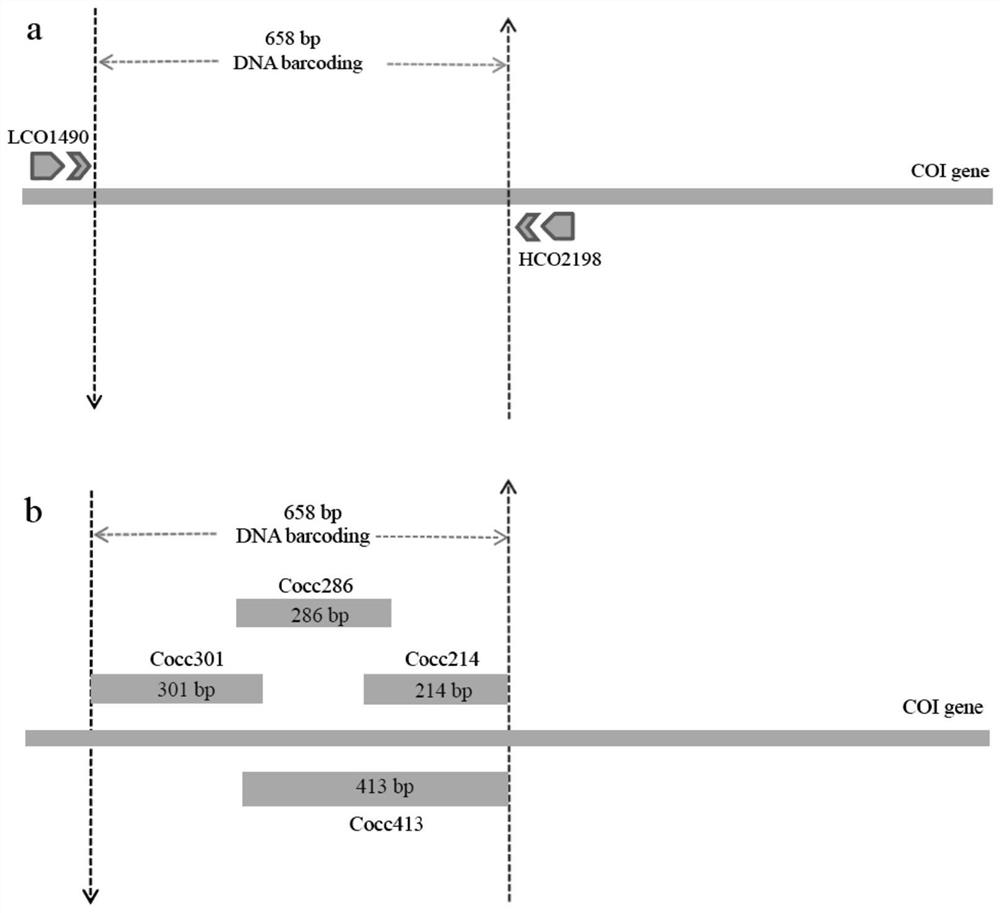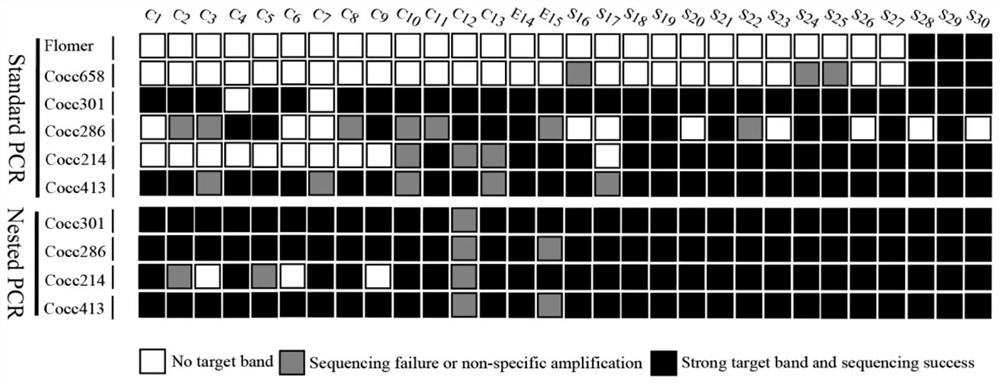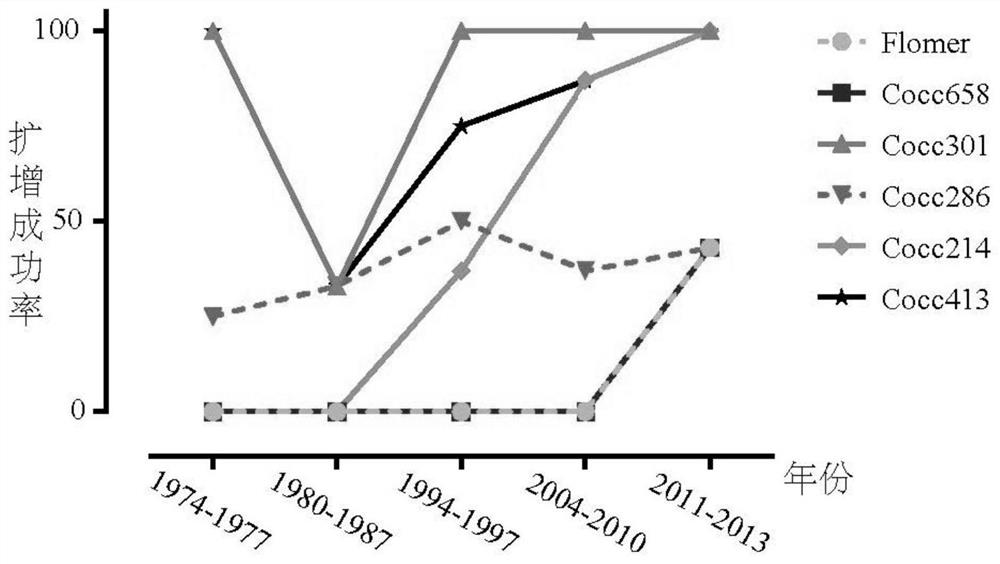A set of mini-barcoding primers for obtaining DNA barcodes of beetle specimens in collections and its application
A barcode, beetle technology, applied in recombinant DNA technology, DNA/RNA fragments, biochemical equipment and methods, etc., can solve the problems of time-consuming and laborious, DNA fragmentation, difficult DNA barcode sequences, etc., to overcome low amplification efficiency, High amplification efficiency and rich database effect
- Summary
- Abstract
- Description
- Claims
- Application Information
AI Technical Summary
Problems solved by technology
Method used
Image
Examples
Embodiment 1
[0036] Example 1 DNA mini barcode primer design
[0037] Based on the existing beetle COI gene sequence, through Geneious 7.1.4, a series of corresponding mini-barcode primers were designed according to the PCR primer design principle. After final screening, a set of efficient and universal mini-barcode primers was determined. The primer sequence information As shown in SEQ ID NO. 1-8 in Table 1, a pair of optimized common DNA barcode primers are also designed, and the primer sequence information is shown in SEQ ID NO. 9-10 in Table 1; the mini barcode The schematic diagram of the amplification of the primers and the optimized common DNA barcode primers is as follows figure 1 shown. Three fragments of Cocc301, Cocc286 and Cocc214 or two fragments of Cocc301 and Cocc413 ( figure 1 ), to quickly obtain the full-length sequence of the DNA barcode of the beetle.
[0038] Table 1 Primer sequences
[0039]
[0040] In order to obtain the full-length sequence of the DNA barcod...
PUM
 Login to View More
Login to View More Abstract
Description
Claims
Application Information
 Login to View More
Login to View More - R&D
- Intellectual Property
- Life Sciences
- Materials
- Tech Scout
- Unparalleled Data Quality
- Higher Quality Content
- 60% Fewer Hallucinations
Browse by: Latest US Patents, China's latest patents, Technical Efficacy Thesaurus, Application Domain, Technology Topic, Popular Technical Reports.
© 2025 PatSnap. All rights reserved.Legal|Privacy policy|Modern Slavery Act Transparency Statement|Sitemap|About US| Contact US: help@patsnap.com



